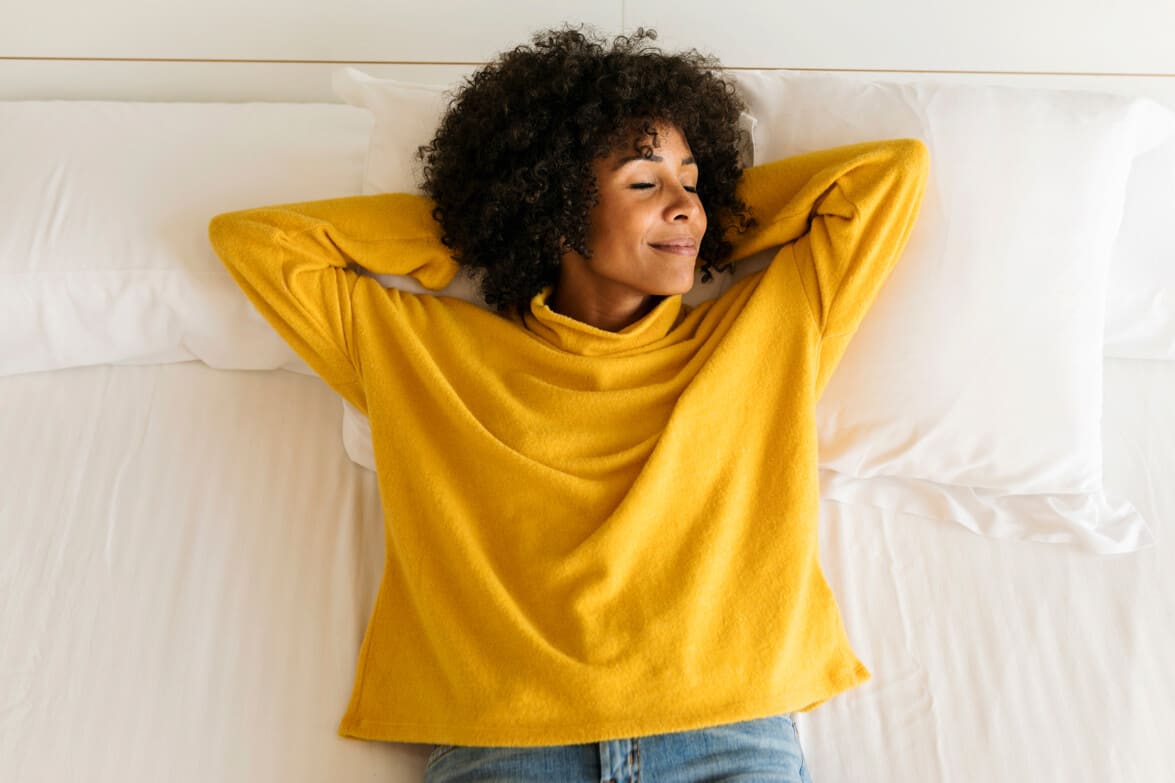This content was produced for the foundry @ Meredith Corp. Health editorial staff was not involved in its creation or production.
horizons
Better Bedroom, Better Sleep
A great night’s sleep is only a few decor adjustments away.
So much of getting a good night’s sleep has to do with your environment. From temperature and light to clearing clutter and making the bed, learn how you can arrange your bedroom to make it a sleep haven.
Block rays.
You sleep well at a hotel not just because you’re away from the worries of home, but also because of the blackout curtains. Blocking out the sun’s rays is key to good sleep because light sends signals that tell the brain to wake up, explains Ralph Downey III, Ph.D., of the Sleep Lab at Cleveland Clinic. And it’s easy to bring this trick home: “Get a blackout roller shade, with drapes as a decorative touch,” says Kristen Peña, an interior designer and owner of K Interiors.
Corral clutter.
You want to keep chores and work out of sight of your bed. You also want world peace and a million dollars. Well, at least the first can be helped by storage bins. Clutter or necessary items can be tucked away when not in use, Peña says.
Cool it.
When you get all warm and cozy in bed, go light on the warm—getting too hot can mess with your zzz’s. The ideal room temperature for sleep is between 60 and 67 degrees, although “seasonal variations and partner preferences can make it a challenge,” says Chris Winter, M.D., a neurologist and author of The Sleep Solution. As for bedding, look for breathable fabrics, which will distribute heat evenly and wick away moisture.
Turn down the lights.
LED lightbulbs are good for the environment. But they sure can throw your sleep cycle out of whack, because the blue tones they emit can inhibit your body’s production of (sleepy-time) melatonin, Winter says. If you install dimmers on your lights, you can lower them as the evening progresses to signal to your brain that it’s almost time for sleep. You can also look for lightbulbs that remove the blue light, or ones that adjust to your needs throughout the day.
Kick the TV out of the bedroom.
Yes, the light from the TV can keep you up, but it’s more likely the noise—and changes in frequency and pitch—that can wake you up once you do doze off. If you are one of the many, many people who think the TV helps them fall asleep, just set the timer so it clicks off not long after you do.
Make an inviting bed.
Imagine if you sat down to dinner at a table that still had all the dirty breakfast and lunch dishes on it. Of course it wouldn’t be a relaxing meal. The same goes for crawling into an unmade bed. “Getting into a bed that’s made is not only more inviting, it’s also downright calming,” says Terry Cralle, author of Sleeping Your Way to the Top. When shopping for bedding, Peña says different layers and textures will up the cozy factor without feeling fussy. She suggests upgrading to sheets made from natural fibers, like linen or cotton, then finishing with down pillows, a duvet and a throw blanket. The extra blanket is great to have for additional warmth when you need it (and to kick off when you don’t). And if it doesn’t annoy you, avoid making the bed as soon as you get up, Cralle says. Letting the sheets air out will keep them dry and release odors.
Choose restful wall colors.
A can of paint may contain the secret to a good night’s sleep. Colors that mimic nature—including blues, greens and grays—are calming and help you relax, Cralle says. And painting the ceiling the same color as the walls (or a slightly darker shade) may help improve sleep.
As previously posted on Family Circle.com



